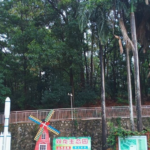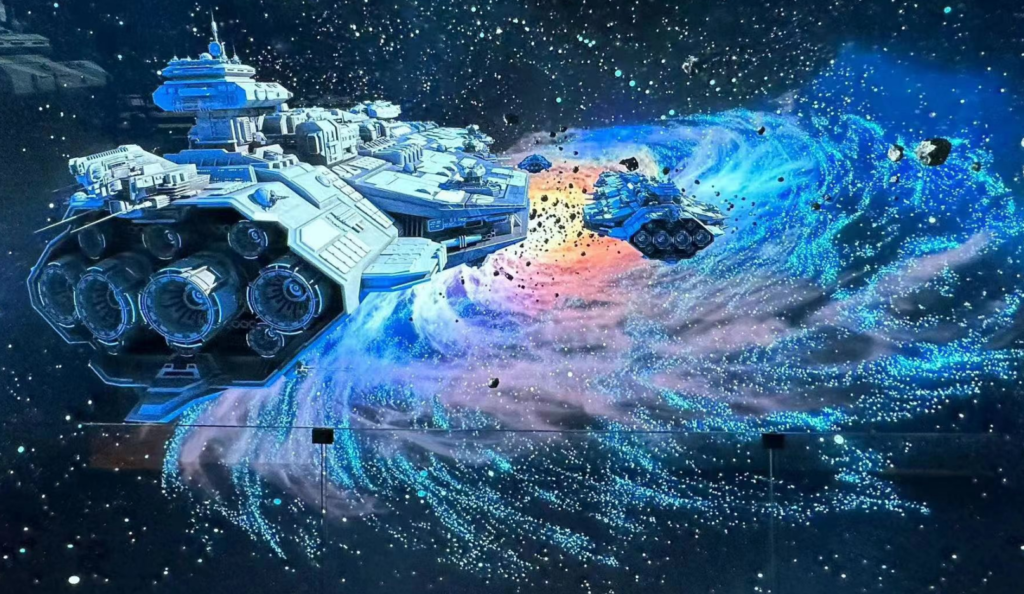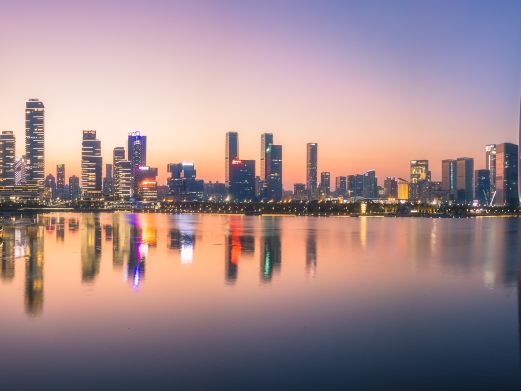Yongzhou Museum is located on the Nanjin South Road in the historical and cultural city of Yongzhou, in the Lingling District, adjacent to the southeast corner of the Zhuzi City. The museum covers an area of 30 acres and has a construction area of 7000 square meters, making it a comprehensive museum. The main building of the museum has a total of 5 floors, with 4 floors above ground facing the street and one floor underground, and a two-story annex, forming a traditional Chinese quadrangle architecture complex. The main building’s roof eaves are high and curved, and there are pavilions at the four corners of the annex, exuding an antique charm and grandeur. The museum’s main entrance faces west towards the street, with a pair of majestic lions lying on either side of the door. A golden plaque inscribed with ‘Yongzhou Museum’ by the contemporary calligrapher Zhao Puchu hangs under the eaves of the main building. After ascending the steps through the moon platform and entering through the antique lattice door, one arrives at the museum’s lobby; directly opposite the main entrance, there is a large screen inscribed with the phrase ‘When writing, one should draw inspiration from the landscape; without visiting Xiaoxiang, how can there be poetry?’. Passing through the序厅, the museum is arranged with two floors and four surrounding corridors, with 16 exhibition halls sequentially laid out on the south, west, and north sides; the east side of the second floor houses a total of 104 meters long stele corridor. The museum collects more than 10,000 cultural relics unearthed and collected from all 11 counties and districts of the city, including 17 national cultural relics. To facilitate people’s understanding and research of the diverse Yongzhou region and cultural history, there are four exhibition halls, mainly displaying the best cultural relics of Yongzhou, divided into ‘Cultural Relics and Historical Sites Pavilion’, ‘Bronze, Ceramics and Pottery Pavilion’, ‘Gold, Silver, Jade and Stone Pavilion’, and ‘Jiangyong Nüshu Pavilion’, with a total of 204 sets of the city’s best cultural relics on display, one large sand table model of the city’s important cultural landscape, and 53 Nüshu works on display. In terms of exhibition form, the museum uses innovative single glass cabinets with four open sides, making the exhibition room layout rich in variation and more convenient for visitors to enjoy. The museum is open from 08:00-12:00 and 15:00-18:00 all year round; from 08:00-12:00 and 14:30-17:30 all year round; and closed all day on Mondays.
Yongzhou Museum
Yongzhou Museum is located on the Nanjin South Road in the historical and cultural city of Yongzhou,[...]









